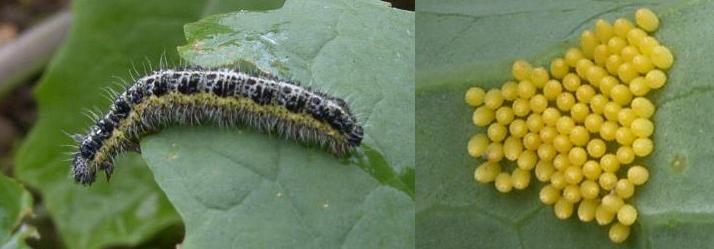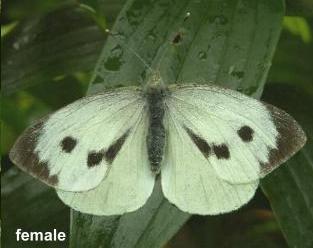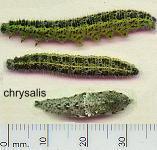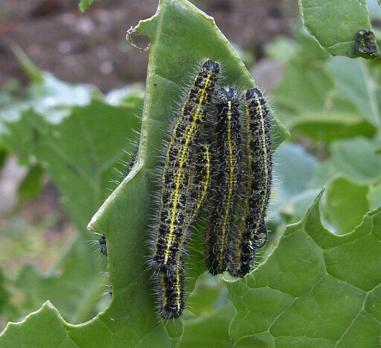Large Cabbage White Butterfly
Scientific name: Pieris brassicae

Caterpillar and eggs of Large Cabbage White Butterfly
The Large Cabbage White Butterfly is
less widely distributed in the world than the Small.
The caterpillars will be found on cruciferous crops,
eg. cabbage, swede, kale, throughout the summer. The
adult, nearly all-white butterfly emerges from the pupa (chrysalis)
in April and May. The adult male has black markings on the tips of its wings; the female has the same marks with the addition of two black spots in the middle of each forewing. After mating the female lays 20 to 100
yellow eggs on the underside of cruciferous plant
leaves.

After about 14 days the larvae (caterpillars)
emerge then moult as they grow. They have well
developed mandibles which they use with devastating
effect on crops. This first generation pupates in
June in a crevice or woody stem, emerging in July as
the second generation which usually causes greater damage to crops in the garden, repeats the cycle and
pupates to overwinter for the next year.


The Large White caterpillars are usually found in groups.
Apart from brassica crops they will
use wallflowers and other
cruciferous plants (four-petalled flowers), as alternate
hosts. If the damage is extensive and the leaves look torn, the culprits may be Pigeons. Slugs leave a similar pattern of damage to the caterpillars and may have left the scene, but there will be a slime trail.
The caterpillar of the Box Tree Moth, which is stripping the leaves of Box plants in gardens throughout the British Isles, has similar colours and markings, but is a completely different species (Cydalima perspectalis). They also cover the plant with webbing.
Treatments
|
|
See also the monograph on the Small White Butterfly
Back to GARDEN
CREATURES


